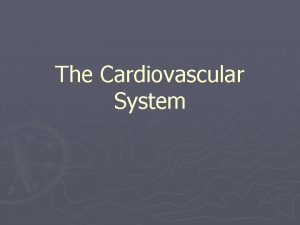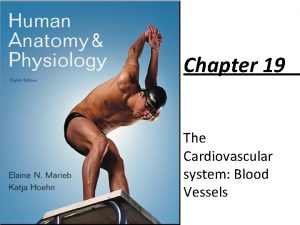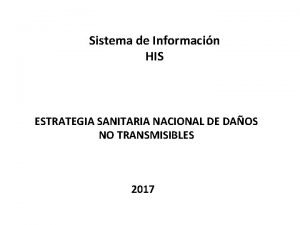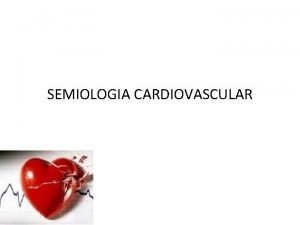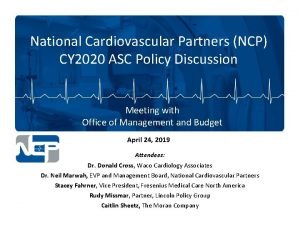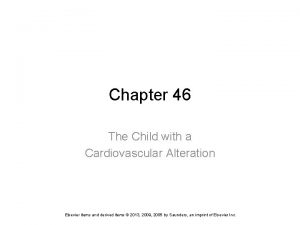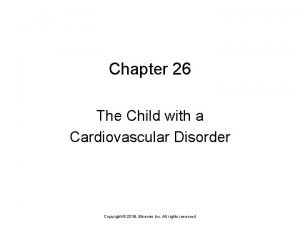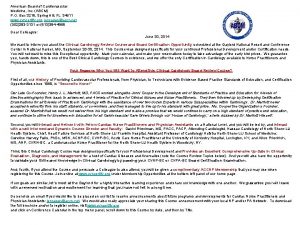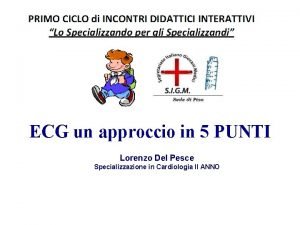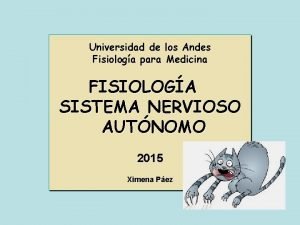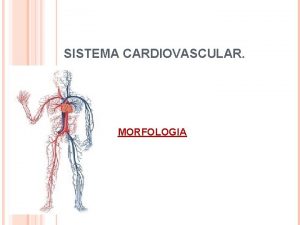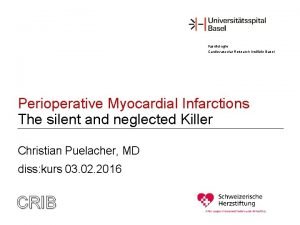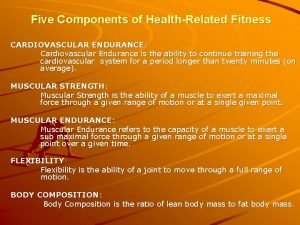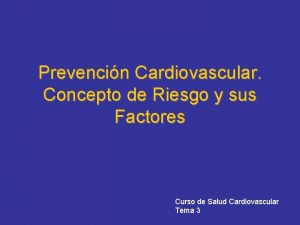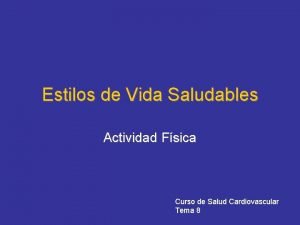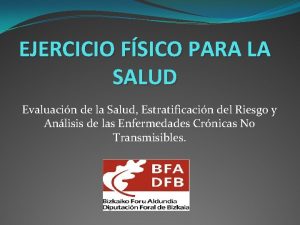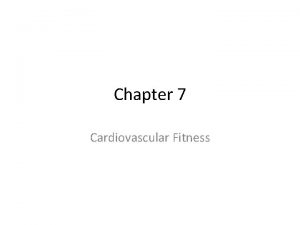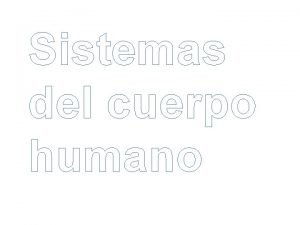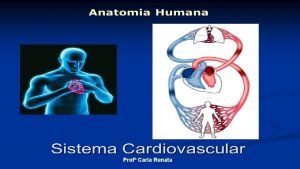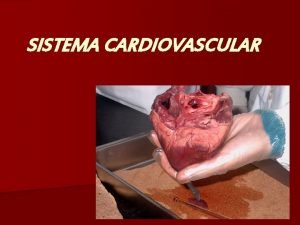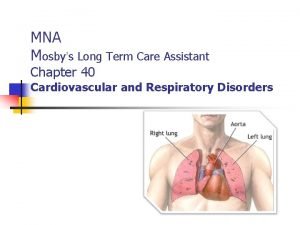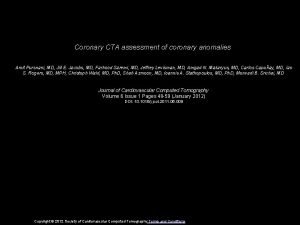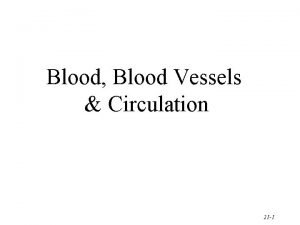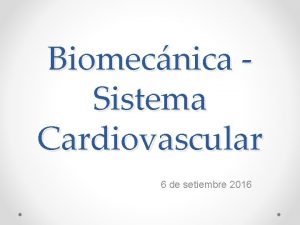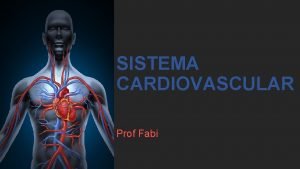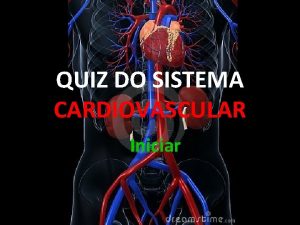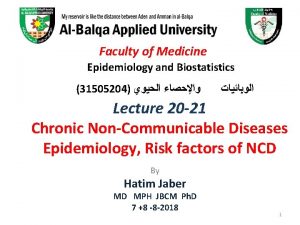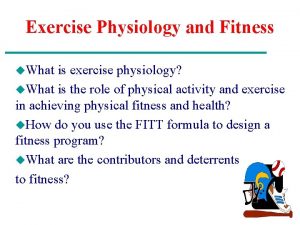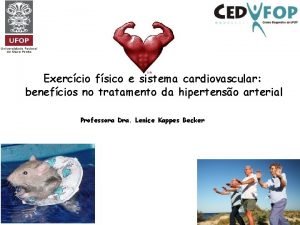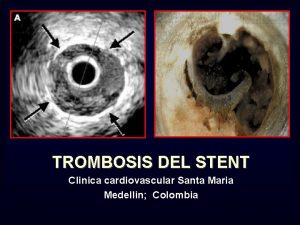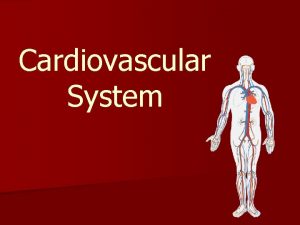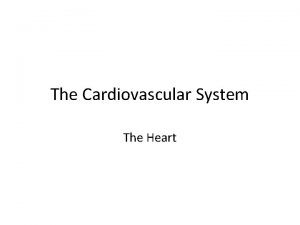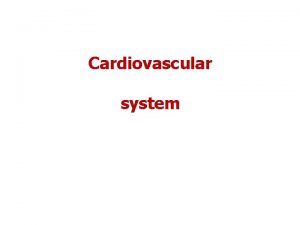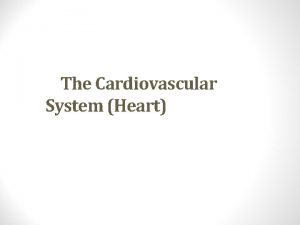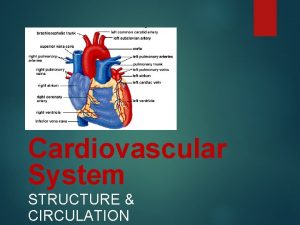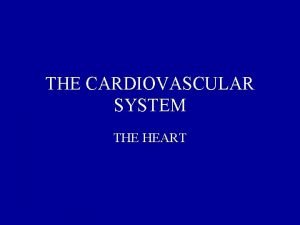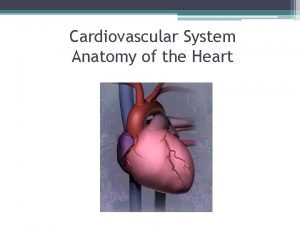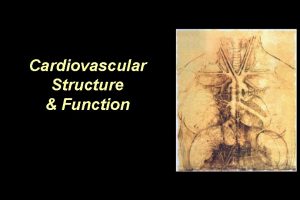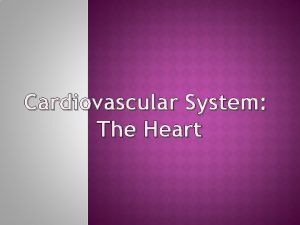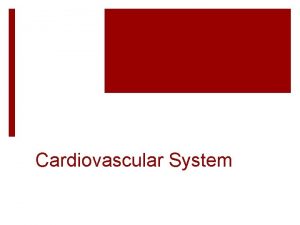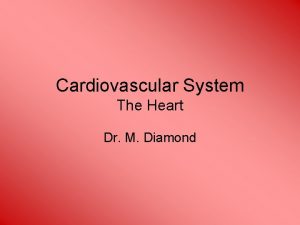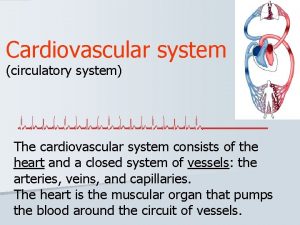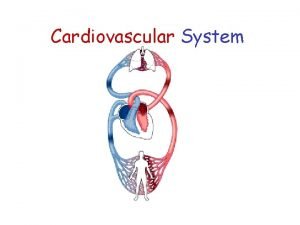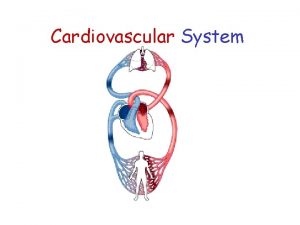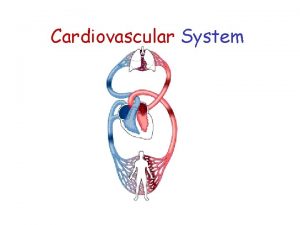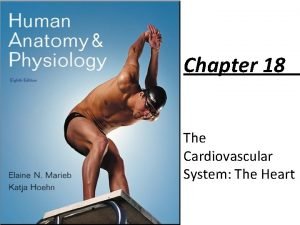Ch 11 Cardiovascular System The Heart 1 State


























































- Slides: 58

Ch 11 Cardiovascular System: The Heart 1. State the function of the cardiovascular system and its components. 2. Describe the location of the heart in the body and identify its major anatomical areas on an appropriate model or diagram. 3. Trace the pathway of blood through the heart. 4. Compare and contrast the pulmonary and systemic circuits. 5. Explain the operation of the heart valves. 6. Name the functional blood supply of the heart. 7. Name the elements of the intrinsic conduction system of the heart and describe the pathway of impulses through this system. (SA node, AV node…) 8. Define systole, diastole, stroke volume, and cardiac cycle. 9. Define heart sounds and murmur. Cardiovascular System: Blood Vessels 11. Compare and contrast the structure and function of arteries, veins, and capillaries. 12. Identify the body's major arteries and veins. 13. Define blood pressure and list factors affecting and/or determining blood pressure. 15. Define hypertension, atherosclerosis and varicose veins & describe possible health consequences of these conditions. 16. Describe the exchanges that occur across capillary walls. 17. Name the fetal vascular modifications, or "fetal shunts, " and describe their function before birth. 18. Explain how regular exercise and a diet low in fats and cholesterol may help maintain cardiovascular health. © 2012 Pearson Education, Inc.

Just to get you thinking about what you already know about the cardiovascular system Write a paragraph that explains what you think the function of the cardiovascular system is, it’s parts, and anything you know about the structure of the parts. (Think about things you’ve learned this year that you can apply to this and include them. ) Draw a picture of the heart and label it. Here’s a little something to get you in the mood: © 2012 Pearson Education, Inc.

Functions & Parts? Your heart pumps 6 L of blood from • Open heart surgery video: your heart to you http: //www. youtube. com/watch? v=Zxqj 1 Bc. Bp. Ig blood vessels & Explanation of bypass surgery: back over 1000 http: //www. youtube. com/watch? v=WM_tcf 5 Ogy 0 times / day! Video of off-pump bypass surgery: http: //www. youtube. com/watch? v=MGzyhu. Cs 43 o © 2012 Pearson Education, Inc.

Learning the part of the heart • Practice: • External: http: //wps. aw. com/bc_marieb_ehap_8/25/6528/1671273. cw/index. html • Internal: http: //wps. aw. com/bc_marieb_ehap_8/25/6528/1671273. cw/index. html © 2012 Pearson Education, Inc.

The Cardiovascular System – Goal 1 • Consists of ______& blood ____ • Function of heart is to_______ • Function of blood vessels is to ____blood around body • The functions of the cardiovascular system • To deliver_____, _______, hormones to tissues • To remove ______& other ______from tissues © 2012 Pearson Education, Inc.

Location – Goal 2 Midsternal line 2 nd rib Sternum Diaphragm Point of maximal intensity (PMI) (a) © 2012 Pearson Education, Inc. Figure 11. 1 a

Goal 2 Superior vena cava Pulmonary trunk Aorta Parietal pleura (cut) Left lung Pericardium (cut) Diaphragm Apex of heart (c) © 2012 Pearson Education, Inc. Figure 11. 1 c

The Heart – Goal 2 • Location • Thorax between the _____in the inferior______ • Orientation • Pointed ______directed toward left______ • Base points toward right_______ • About the size of your ______ © 2012 Pearson Education, Inc.

Heart Anatomy External - Goal 2 © 2012 Pearson Education, Inc.

The Heart: Coverings – Goal 2 • Pericardium—a double-walled ____ • Video showing pericardium getting cut during surgery • http: //www. youtube. com/watch? v=hch. Nm. Usx 7 h. Q © 2012 Pearson Education, Inc.

The Heart: Chambers – Goal 2 • Right and left side act as separate _____ • ___ chambers • 2 ____ • Receiving chambers • Right atrium • Left atrium • 2 _____ • Discharging chambers • Right ventricle • Left ventricle © 2012 Pearson Education, Inc.

The Heart: Septa Goal 2 Interventricular septum Separates the two _____ Interatrial septum Separates the two______ Left ventricle Right ventricle Muscular interventricular septum © 2012 Pearson Education, Inc. Figure 11. 5

The Heart: Associated Great Vessels – Goal 2 • Arteries • Aorta • Leaves_____ • Pulmonary arteries • Leave______ • Veins • Superior and inferior venae cavae • Enter _________ • Pulmonary veins (four) • Enter ________ © 2012 Pearson Education, Inc.

Superior vena cava Aorta Left pulmonary artery Right pulmonary artery Left atrium Right atrium Left pulmonary veins Right pulmonary veins Pulmonary semilunar valve Fossa ovalis Right atrioventricular valve (tricuspid valve) Right ventricle Chordae tendineae Inferior vena cava Left atrioventricular valve (bicuspid valve) Aortic semilunar valve Left ventricle Interventricular septum Myocardium Visceral pericardium (b) Frontal section showing interior chambers and valves. © 2012 Pearson Education, Inc. Figure 11. 3 b

Links to practice sites: • http: //wps. aw. com/bc_marieb_ehap_8/25/652 8/1671273. cw/index. html © 2012 Pearson Education, Inc.

The Heart’s Role in Blood Circulation – Goal 3 & 4 • Systemic circulation • Blood flows from the _____ side of the heart through the ______ tissues and back to the _____ side of the heart • Pulmonary circulation • Blood flows from the _____ side of the heart to the ______ and back to the _____ side of the heart. © 2012 Pearson Education, Inc.

Blood Flow Through the Heart – Goal 3 • ____and ____ venae cavae dump blood into the ________ • From right atrium, through the ____ valve, blood travels to the ____________ • From the right ventricle, blood leaves the heart as it passes through the ______ semilunar valve into the ______ trunk • Pulmonary trunk splits into right and left pulmonary ____ that carry blood to the ____ Continued on next page… © 2012 Pearson Education, Inc.

Blood Flow Through the Heart – Goal 3 • _____ is picked up and ________ is dropped off by blood in the lungs. • Oxygen-rich blood returns to the heart through the four _______. • Blood enters the left ______ and travels through the _____ valve into the left _______ • From the left ventricle, blood leaves the heart via the _______ semilunar valve and aorta • http: //www. youtube. com/watch? v=rguzt. Y 8 aqpk © 2012 Pearson Education, Inc.

The Heart’s Role in Blood Circulation – Goal 3 & 4 • In both the pulmonary and systemic circulations, the exchange of _____, nutrients, and _____ products occurs in the capillaries that join arterioles to venules © 2012 Pearson Education, Inc.

The Heart’s Role in Blood Circulation – Goal 3 & 4 © 2012 Pearson Education, Inc.

The Heart: Valves – Goal 5 © 2012 Pearson Education, Inc.

The Heart: Valves – Goal 5 • Allow blood to flow in only one direction to prevent ______ • Four valves in heart • Atrioventricular (AV) valves—between _____and_____ • ______ valve (right side of heart) • _____ (mitral) valve (left side of heart) • Semilunar valves—between ventricle and ______ • Pulmonary semilunar valve • Aortic semilunar valve © 2012 Pearson Education, Inc.

Superior vena cava Aorta Left pulmonary artery Right pulmonary artery Left atrium Right atrium Left pulmonary veins Right pulmonary veins Pulmonary semilunar valve Fossa ovalis Right atrioventricular valve (tricuspid valve) Right ventricle Chordae tendineae Inferior vena cava Left atrioventricular valve (bicuspid valve) Aortic semilunar valve Left ventricle Interventricular septum Myocardium Visceral pericardium (b) Frontal section showing interior chambers and valves. © 2012 Pearson Education, Inc. Figure 11. 3 b

The Heart: Valves – Goal 5 • AV valves • _____ in place by chordae tendineae (“heart strings”) • ____ during heart relaxation and ____ during ventricular contraction • Semilunar valves • _____ during heart relaxation but _____ during ventricular contraction • Notice these valves operate _____ of one another to force a _____-way path of blood through the heart © 2012 Pearson Education, Inc.

Cardiac Circulation - Goal 6 • Blood in the 4 chambers of the heart does not nourish the myocardium… so what does? © 2012 Pearson Education, Inc.

Cardiac Circulation - Goal 6 • Cardiac circulation supplies the myocardium with blood. • The heart has its own nourishing circulatory system consisting of • Coronary _____—branch from the aorta to supply the heart muscle with ________ blood • Cardiac _____—drain the myocardium of blood • Coronary sinus—a large vein on the posterior of the heart, receives blood from cardiac veins • Blood empties into the right atrium via the coronary sinus © 2012 Pearson Education, Inc.

Homeostatic Imbalance – Goal Bonus • Angina pectoris – crushing pain from _____ blood flow to myocardium. May be experienced when heart beats at a rapid pace (coronary flow occurs when heart is relaxed but if heart is beating rapidly there is little relaxation time) This is a warning that should not be ignored. • Myocardial infarction (aka “heart attack” or “coronary”) – ____ of oxygen deprived heart cells. © 2012 Pearson Education, Inc.

• Women are more likely than men to have the “other” signs of a heart attack. • Call 911 – get to the hospital as quickly as possible. © 2012 Pearson Education, Inc.

The Heart: Conduction System – Goal 7 • Intrinsic conduction system (nodal system) • Heart muscle cells contract, without______, in a regular, continuous way (Indiana Jones video below) • http: //www. youtube. com/watch? v=KBIdc. Uxdgo 0 • Special tissue sets the pace • Sinoatrial node = SA node (“_____”), is in the right _______ • Atrioventricular node = AV node, is at the junction of the atria and _______ © 2012 Pearson Education, Inc.

The Heart: Conduction System – Goal 7 Superior vena cava Sinoatrial (SA) node (pacemaker) Left atrium Atrioventricular (AV) node Right atrium Bundle branches Atrioventricular (AV) bundle (bundle of His) Purkinje fibers © 2012 Pearson Education, Inc. Interventricular septum Figure 11. 7

Homeostatic Imbalance – Goal Bonus • Heart block—damaged AV node releases ventricles from control of the SA node; result is in a slower heart rate as ventricles contract at their own rate • Ischemia—lack of adequate _______ supply to heart muscle • Fibrillation—a ______, uncoordinated shuddering of the heart muscle • Video that shows various types of arrhythmias • http: //www. bupaintl. com/health/factsheets/H/Heartblock#tab. Container © 2012 Pearson Education, Inc.

Homeostatic Imbalances – Goal Bonus • Homeostatic imbalance (continued) • Tachycardia—______ heart rate over 100 beats per minute • Bradycardia—______ heart rate less than 60 beats per minutes © 2012 Pearson Education, Inc.

The Heart: Cardiac Cycle & Heart Sounds – Goal 8 • Atria contract _______ • Atria relax, then ______contract • Systole = ventricular______ • Diastole = ventricular _______ © 2012 Pearson Education, Inc.

The Heart: Cardiac Cycle & Heart Sounds Goal 8 & 9 Cardiac cycle—events of one complete heart beat Heart Sounds: • ____ - Atrioventricular valves close causes first heart sound • ____ - Second heart sound is heard as semilunar valves close • Murmur – _______ heart sounds due to leaky valves or other issues. © 2012 Pearson Education, Inc.

The Heart: Cardiac Output – Goal 8 (SV) • Cardiac output (CO) • Amount of blood pumped by each side (ventricle) of the heart in one minute • Determined by SV x HR • Stroke volume (SV) • _____ of blood pumped by each ventricle in one contraction (each heartbeat) • About 70 m. L of blood is pumped out of the left ventricle with each heartbeat • Heart rate (HR) • Typically 75 beats per minute © 2012 Pearson Education, Inc.

The Heart: Regulation of Heart Rate • Increased heart rate • Crisis • Low blood pressure • Hormones • Epinephrine • Thyroxine • Exercise • Decreased blood volume • Decreased heart rate • Parasympathetic nervous system • High blood pressure or blood volume • Decreased venous return © 2012 Pearson Education, Inc.

Blood Vessels: The Vascular System – Goal 11 • Transport blood to the tissues and back to heart. • Carry blood _______ from the heart • Arteries • Arterioles • Exchanges between tissues and blood • ______ – one cell thick • Return blood _______ the heart • Venules • Veins - valves © 2012 Pearson Education, Inc.

(a) © 2012 Pearson Education, Inc. Artery Vein Figure 11. 10 a

Venous Aids for the Return of Blood to the Heart – Goal 11 Valve (open) • To assist in the movement of blood back to the heart: • Larger veins have _______ to prevent backflow • _____ muscle “milks” blood in veins toward the heart Contracted skeletal muscle Valve (closed) Vein Direction of blood flow © 2012 Pearson Education, Inc.

Vascular shunt Precapillary sphincters True capillaries Terminal arteriole Postcapillary venule (a) Sphincters open; blood flows through true capillaries. © 2012 Pearson Education, Inc. Figure 11. 12 a

© 2012 Pearson Education, Inc. Figure 11. 12 b

Major Arteries – Goal 12 © 2012 Pearson Education, Inc.

Major Veins – Goal 12 © 2012 Pearson Education, Inc.

Anterior Frontal lobe Optic chiasma Middle cerebral artery Cerebral arterial circle (circle of Willis) • Anterior communicating artery • Anterior cerebral artery Internal carotid artery Mammillary body • Posterior communicating artery • Posterior cerebral artery Temporal lobe Basilar artery Vertebral artery Pons Occipital lobe (a) © 2012 Pearson Education, Inc. Cerebellum Posterior Figure 11. 15 a

© 2012 Pearson Education, Inc. Figure 11. 15 b

Superior vena cava Ductus arteriosus Pulmonary artery Pulmonary veins Foramen ovale Inferior vena cava Hepatic vein Ductus venosus Inferior vena cava Hepatic portal vein Umbilical vein Fetal umbilicus Umbilical cord Umbilical arteries KEY: High oxygenation Moderate oxygenation Low oxygenation Very low oxygenation © 2012 Pearson Education, Inc. Aorta Common iliac artery External iliac artery Internal iliac artery Urinary bladder Placenta Figure 11. 16

Fetal Circulation • Fetus receives exchanges of gases, nutrients, and wastes through the placenta • Umbilical cord contains three vessels • Umbilical vein—carries blood rich in nutrients and oxygen to the fetus • Umbilical arteries (2)—carry carbon dioxide and debris-laden blood from fetus to placenta © 2012 Pearson Education, Inc.

Fetal Circulation – Goal 17 © 2012 Pearson Education, Inc. Blood flow bypasses the lungs • Foramen ovale __________ • Ductus arteriosus connects the aorta and pulmonary trunk (becomes ligamentum arteriosum at birth)

Brachiocephalic trunk Left common carotid artery Superior vena cava Left subclavian artery Right pulmonary artery Aortic arch Ascending aorta Ligamentum arteriosum Left pulmonary artery Pulmonary trunk Left pulmonary veins Right pulmonary veins Left atrium Right coronary artery in coronary sulcus (right atrioventricular groove) Anterior cardiac vein Right ventricle Marginal artery Small cardiac vein Inferior vena cava (a) © 2012 Pearson Education, Inc. Auricle of left atrium Circumflex artery Left coronary artery in coronary sulcus (left atrioventricular groove) Left ventricle Great cardiac vein Anterior interventricular artery (in anterior interventricular sulcus) Apex Figure 11. 3 a

Superior vena cava Aorta Left pulmonary artery Right pulmonary artery Left atrium Right atrium Left pulmonary veins Right pulmonary veins Pulmonary semilunar valve Fossa ovalis Right atrioventricular valve (tricuspid valve) Right ventricle Chordae tendineae Inferior vena cava Left atrioventricular valve (bicuspid valve) Aortic semilunar valve Left ventricle Interventricular septum Myocardium Visceral pericardium (b) Frontal section showing interior chambers and valves. © 2012 Pearson Education, Inc. Figure 11. 3 b

Blood Pressure – Goal 13 • Measurements by health professionals are made on the pressure blood exerts in large____ • Systolic—pressure at the peak of ventricular _____ • Diastolic—pressure when ventricles _______ • Write systolic pressure first and diastolic last (120/80 mm Hg) • Pressure in blood vessels ____ as distance from the heart increases • http: //www. youtube. com/watch? v=t 0 Ing. UYN 2 OA&feature=related © 2012 Pearson Education, Inc.

120 Systolic pressure Pressure (mm Hg) 100 80 60 Diastolic pressure 40 20 Veins Venules Capillaries Venae cavae © 2012 Pearson Education, Inc. Arterioles Aorta − 10 Arteries 0 Figure 11. 20

Blood pressure 120 systolic 70 diastolic (to be measured) Measuring Blood Pressure http: //www. youtube. co m/watch? v=u 6 sa. TO 8_ o 2 g Brachial artery © 2012 Pearson Education, Inc. (a) The course of the brachial artery of the arm. Assume a blood pressure of 120/70 in a young, healthy person. Figure 11. 21 a

Blood Pressure: Effects of Factors – Goal 13 • BP is blood pressure • BP is affected by age, weight, time of day, exercise, body position, emotional state © 2012 Pearson Education, Inc.

Variations in Blood Pressure • Normal human range is variable • Normal • 140 to 110 mm Hg systolic • 80 to 75 mm Hg diastolic • Hypotension • Low systolic (below 110 mm Hg) • Often associated with illness • Hypertension • High systolic (above 140 mm Hg) • Can be dangerous if it is chronic © 2012 Pearson Education, Inc.

Capillary Exchange – Goal 16 • Substances _____due to concentration gradients • Oxygen and nutrients leave the blood • Carbon dioxide and other wastes leave the cells • http: //www. youtube. com/watch? v=4 y. BMY 9 Wj 7 z 0 © 2012 Pearson Education, Inc.

Developmental Aspects of the Cardiovascular System – Goal 15 • Aging problems associated with the cardiovascular system include • ________– valves weaken & blood pools in veins • Progressive atherosclerosis – _______ builds up inside artery walls & can result in thrombosis http: //www. youtube. com/wa tch? v=GL 37 q 6 eu. ND 4 • Loss of elasticity of vessels leads to hypertension © 2012 Pearson Education, Inc.

Varicose veins © 2012 Pearson Education, Inc.
 True capillaries
True capillaries What makes up the circulatory system
What makes up the circulatory system Pithed rat
Pithed rat Its tubular dude
Its tubular dude Blood vessels crash course
Blood vessels crash course Chapter 5 the cardiovascular system
Chapter 5 the cardiovascular system Chapter 11 the cardiovascular system figure 11-3
Chapter 11 the cardiovascular system figure 11-3 Figure 11-2 is an anterior view of the heart
Figure 11-2 is an anterior view of the heart Lesson 11 cardiovascular system
Lesson 11 cardiovascular system Lesson 11 cardiovascular system
Lesson 11 cardiovascular system Tissue in cardiovascular system
Tissue in cardiovascular system The cardiovascular system chapter 11
The cardiovascular system chapter 11 Introduction of heart
Introduction of heart Ptca
Ptca Anatomy and physiology unit 7 cardiovascular system
Anatomy and physiology unit 7 cardiovascular system Cardiovascular system diseases and disorders chapter 8
Cardiovascular system diseases and disorders chapter 8 Chapter 13 cardiovascular system
Chapter 13 cardiovascular system Chapter 11 the cardiovascular system figure 11-2
Chapter 11 the cardiovascular system figure 11-2 The cardiovascular system includes the
The cardiovascular system includes the Cardiovascular system
Cardiovascular system Venule
Venule Cardiac dullness
Cardiac dullness External anatomy of sheep heart
External anatomy of sheep heart Hrt 2 hrt
Hrt 2 hrt Riesgo cardiovascular por perimetro abdominal
Riesgo cardiovascular por perimetro abdominal Maniobra de pachon
Maniobra de pachon Rias hipertension arterial
Rias hipertension arterial Fresenius national cardiovascular partners
Fresenius national cardiovascular partners Cardiovascular drift
Cardiovascular drift Chapter 46 the child with a cardiovascular alteration
Chapter 46 the child with a cardiovascular alteration The child with a cardiovascular disorder chapter 26
The child with a cardiovascular disorder chapter 26 Chapter 25 assessment of cardiovascular function
Chapter 25 assessment of cardiovascular function American board of cardiovascular medicine
American board of cardiovascular medicine Advanced cardiovascular life support
Advanced cardiovascular life support Centro cardiovascular
Centro cardiovascular Generalidades del sistema cardiovascular
Generalidades del sistema cardiovascular Cardiovascular research institute basel
Cardiovascular research institute basel Cardiovascular endurance health related fitness
Cardiovascular endurance health related fitness Salud cardiovascular
Salud cardiovascular Mapeh grade 7
Mapeh grade 7 Salud cardiovascular
Salud cardiovascular Fsico
Fsico Chapter 7 cardiovascular fitness
Chapter 7 cardiovascular fitness Chapter 16 cardiovascular emergencies
Chapter 16 cardiovascular emergencies Rosita rodriguez
Rosita rodriguez Aparato cardiovascular
Aparato cardiovascular Desenho da pequena circulação
Desenho da pequena circulação Pequena e grande circulação
Pequena e grande circulação The assistant chapter 40
The assistant chapter 40 Prairie cardiovascular consultants springfield il
Prairie cardiovascular consultants springfield il Dr amit pursnani
Dr amit pursnani What is arteriolar tone
What is arteriolar tone Sistema cardiovascular sus partes
Sistema cardiovascular sus partes Pequenos vasos sanguineos
Pequenos vasos sanguineos Sistema cardiovascular quiz
Sistema cardiovascular quiz Cardiovascular disease risk factor
Cardiovascular disease risk factor Meaning of exercise physiology
Meaning of exercise physiology Sistema cardiovascular
Sistema cardiovascular Clinica cardiovascular santa maria
Clinica cardiovascular santa maria


















